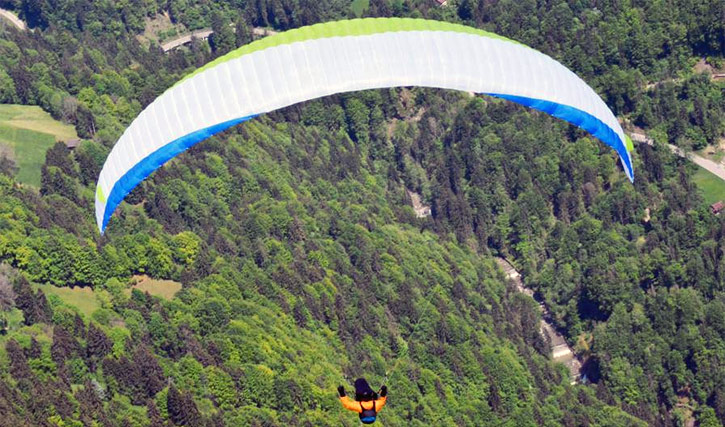Like many paraglider pilots, I've been a big fan of the Red Bull X-Alps ever since the event launched in 2003 (with only 17 participants and a small audience). This incredible hike and fly race embodies much what I love about paragliding: a wonderful light flying machine that fits in a bag, which allows you to launch into unknown adventures, and challenges you to make the most of the day's given conditions. With cross-country paragliding, no two flights are ever the same.
Each time the X-Alps organisers make this event more challenging. The 2015 route had more route choices and mountain crossings than ever before. As well as inspiring many to become pilots and embark on their own adventures, the huge popularity of the race, combined with the extremely demanding nature, has encouraged great innovation in paragliding equipment.
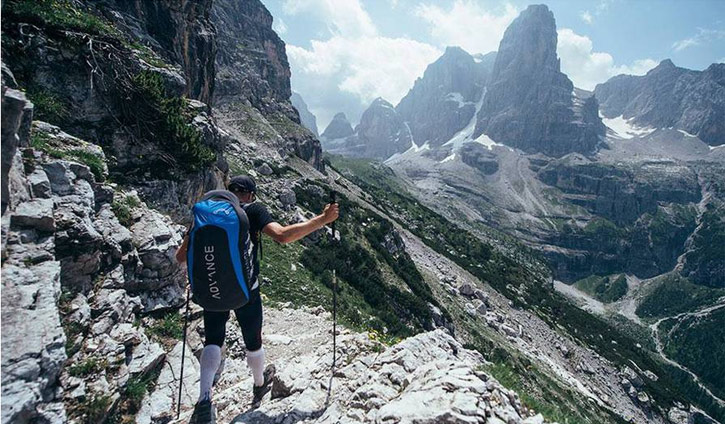
Image © Red Bull Content Pool
When their kit is not carrying them through the air the competitors have to carry it all, across valleys and mountains, so they want it to be as light as possible with as much performance. However since they can't afford to be too choosy about the conditions they fly in they also need their equipment to be practical and manageable.
In 2003, X-Alps athletes lugged around 20 kg of kit across the Alps. The wings had a glide ratio of around 9:1, and a top speed of around 60 kph. In 2015 the best paragliders were just over 3 kg, whilst the best harnesses and reserves weighed a mere 1 kg each: total race kits now weigh under 7 kg! Wings are claimed to be gliding at close to 11:1. Top speed hasn't increased much, but wings have become more efficient and stable at speed, allowing pilots to fly faster and further.
It's notable that X-Alps competitors choose not to fly the highest performing paragliders like the 2-line EN CCC rated wings that most 'serious' competition pilots fly. Prioritising practicality over performance has been championed by four times X-Alps winner Christian Maurer ('Chrigel the Eagle'). Advance worked with Chrigel on the development of the Omega X-Alps wing. He commented: "It has been my absolute privilege to be able to share my wishes and ideas with the ADVANCE development team, and fly and evaluate the prototypes – until the wing was ready. The total concept of the wing is new, and concerns itself with the compromise of light canopy weight and high performance."
X-Alps rookie Sebastian Huber also chose Advance equipment, and he finished second, having given Chrigel a good run for his money at times!
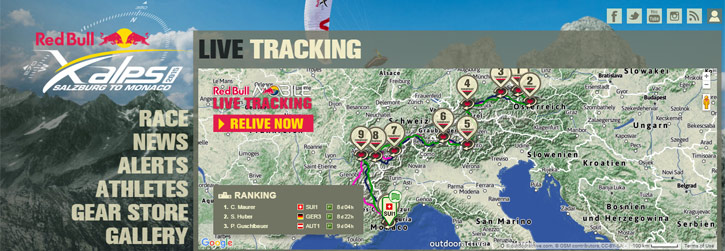
I heard that Advance decided to change the final production version compared to the ones used in the X-Alps race. I asked Advance why.
Valery Chapuis replied: "This is explained on our website. As usual at ADVANCE we want to present the best possible products to the pilots; we considered it advantageous for our customers to integrate the improvements based on the feedback of Chrigel and Basti. If not it would have meant we knew and had the possibility to have a better product, but didn't take the chance to do it. It was more work for us but we decided it was worth it to do it. The changes are 1/2 m2 bigger, different lines trimming giving a better pitch stability, the decision to fix normal risers and not thin, and all together more performance, not 1 point more glide angle but a little bit more."
The first production Omega X-Alps reached pilots in October. Soon after, an extremely complimentary review appeared in Thermik magazine, with very positive feedback from pilots. I was looking forward to getting my hands on it. It was a great day for flying when our demo Omega X-Alps 24 arrived, so I raced off to the hill!
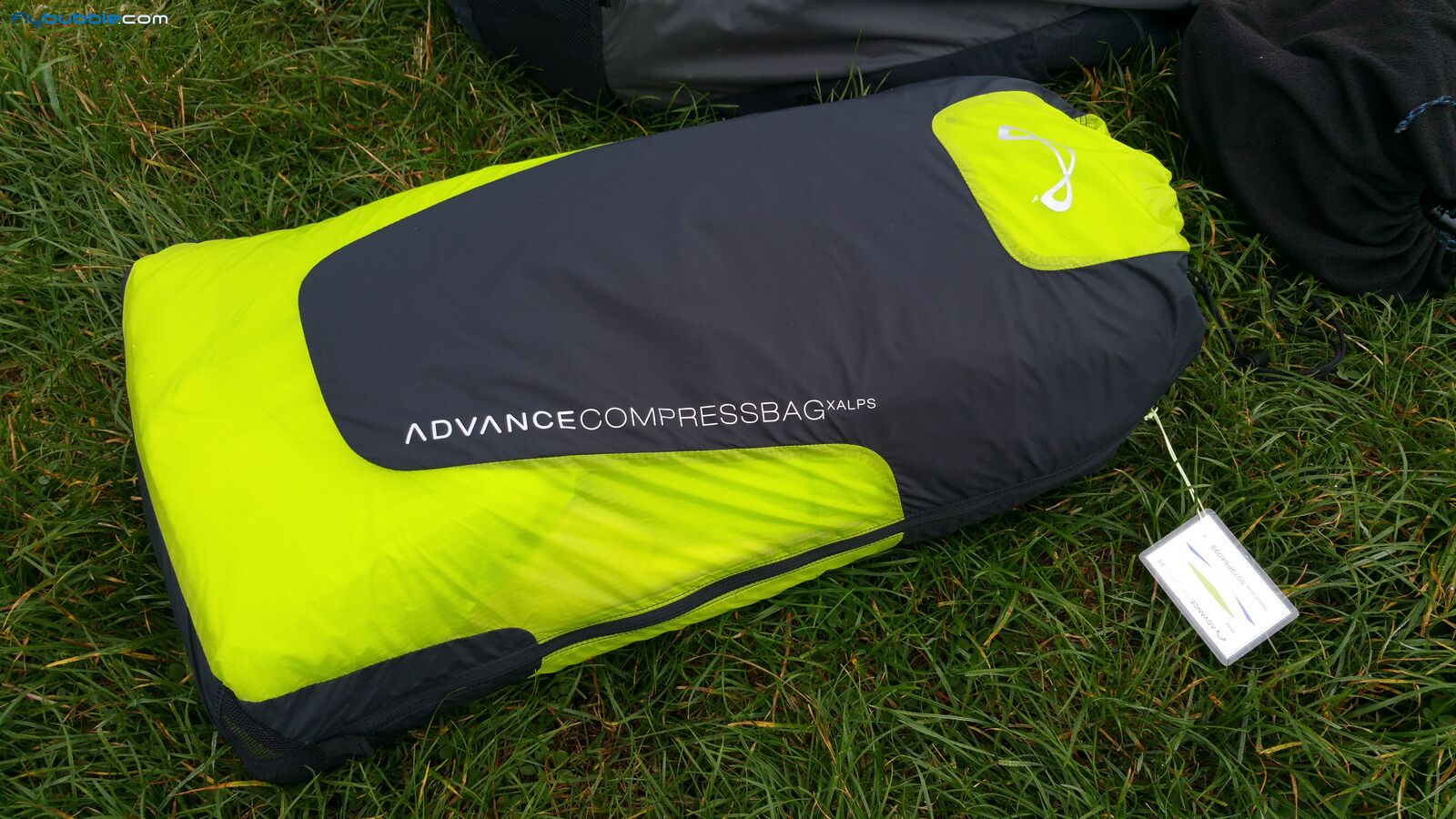
Construction
The Omega X-Alps is very light and compact for a high performance wing. It is delivered only with a lightweight compressible inner bag. Valery Chapuis at Advance explained: "We think most of the pilots already have a mountain rucksack or a bag with their harness (like the Lightpack 2 with the Lightness 2), so another backpack was not necessary." The COMPRESSBAG XALPS has a zipped gusset on one side, allowing it to be expanded for putting the wing in, then compressed and zipped up to squeeze some of the air out and make it more compact. It's simple, lightweight and works well. Although it doesn't help you to concertina pack the wing, it's much lighter than a concertina bag.
Advance's usual top notch build quality and careful attention to detail is immediately apparent. Every material and component used is of the highest quality. The base of the risers has a protective material cover; the left and right risers are colour coded; the pulleys for the speed system are neatly shrouded in high quality neoprene; the pulleys themselves are high quality, low friction; the speed system line is unsheathed for low friction and threaded back in to itself so it doesn't catch; the little balls are a neat way to give a two-geared speed system; the brake magnets are strong and have nice ridged edges to hold the handles in place; the brake handles are well made and nice to grip; the metal swivels help prevent brake lines twisting; the ceramic rings the brake lines pass through are perfect; the maillons are genuine Maillon Rapide, made by Peguet; the plastic maillon inserts keep the lines in place and stop the maillons coming undone; the colour-coded sheathing on the base of the lines makes it much easier to identify which line is which; the orange stabilo lines to make them quick and easy to spot in case of a cravat... I could go on, but I'm guess you get the idea!
The wing itself is beautifully constructed and gives the impression that, despite the extremely light material it is made from, it will stand the test of time very well in the hands of a careful pilot.

Launching
I'm possibly a bit fussier about a wing's ground handling characteristics than most pilots since I fly mostly from small grassy hills which means that I often fly in stronger winds and on lighter wind days I often end up having to slope land and ground handle the wing up the slope. The easier the wing is to ground handle, the more it will help me to get back up, and into the air!
I've found that the more a wing is geared towards performance, the more difficult it usually is to manage on the ground. If your input is less than perfect then they tend to snake about, tie themselves up in knots, come up asymmetrically, be reluctant to fly at first then shoot up hard and pluck you off the ground, and stall easily when you try to stop them overshooting. I would even describe some of the high performance wings I've flown over the years as 'a bit of a pig' on the ground, especially 2-liners.
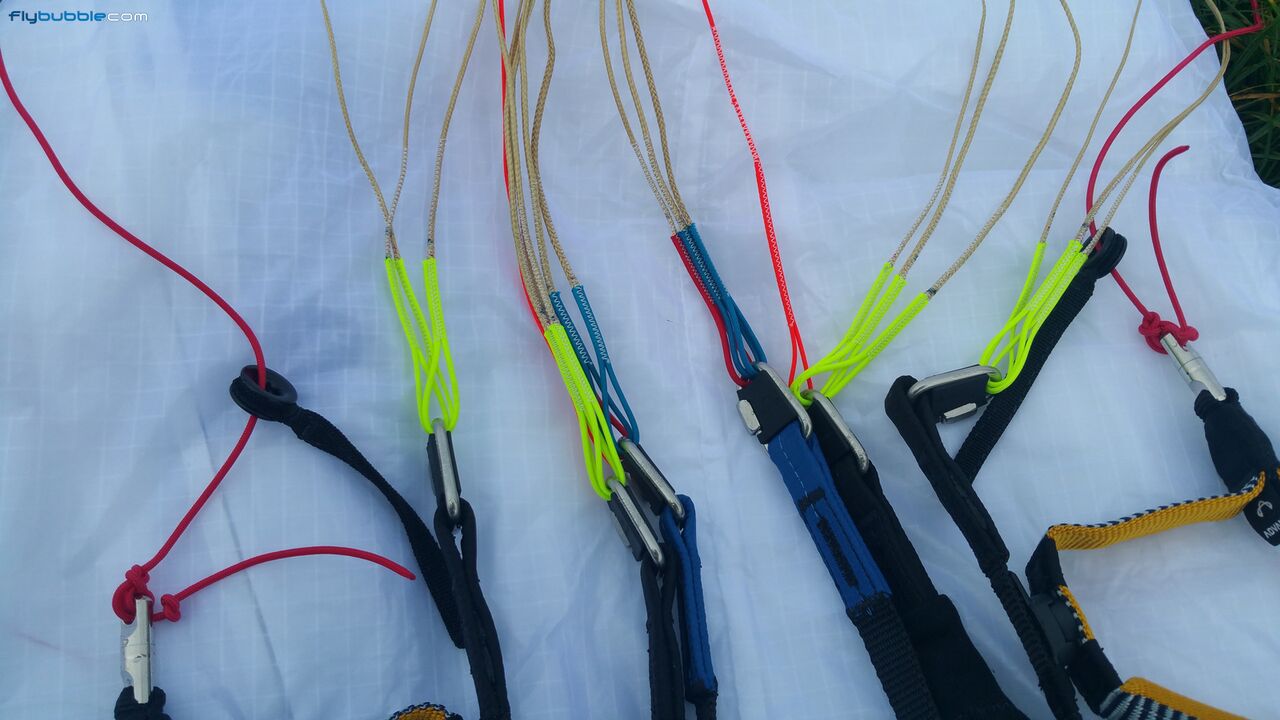
The Omega X-Alps is a delight to launch and ground handle, surprisingly easy for an EN D rated wing with an aspect ratio of 6.9. It reminds me of my old Omega 8 in this regard but it is significantly lighter, making it even nicer in some ways. The Omega X-Alps does not need much convincing to come up and fly so if you pull it up too hard in a breeze, or hang on to the risers for too long, then it may well come up fast and pluck you off the ground. It may also front tuck if you don't catch it just before the top of the arc with a measured dab on the brakes. However there is no need to pull on the risers hard as it doesn't have any tendency to hang back or get stuck in the first part of the launch; only a light impulse on the risers is required in even the lightest breeze. I found I could launch it easily without using the risers at all, then control the rising speed easily by moving towards the wing, as required. A pilot who is capable of flying this level of wing should have no problems launching it in all but the most demanding conditions.
Conditions were weak when I launched the first time, there really wasn't enough lift to stay up. Whilst the Omega XALPS seemed to sink slower than all other wings, after a few minutes scratching, I still went down. I side landed about 2/3 of the way down the hill on a fairly steep bit of slope with lots of scrub around. I thought it would be hard to kite the wing back up the slope with such light wind... but I gave it a try anyway, running along the slope to give the wing some airspeed, then applying a touch of brake. It quickly produced enough lift to pull me diagonally up the hill. To my surprise, the wing's forgiving nature allowed me to kite it all the way back up with relative ease. By the time I was on the top the next thermal cycle was coming through.
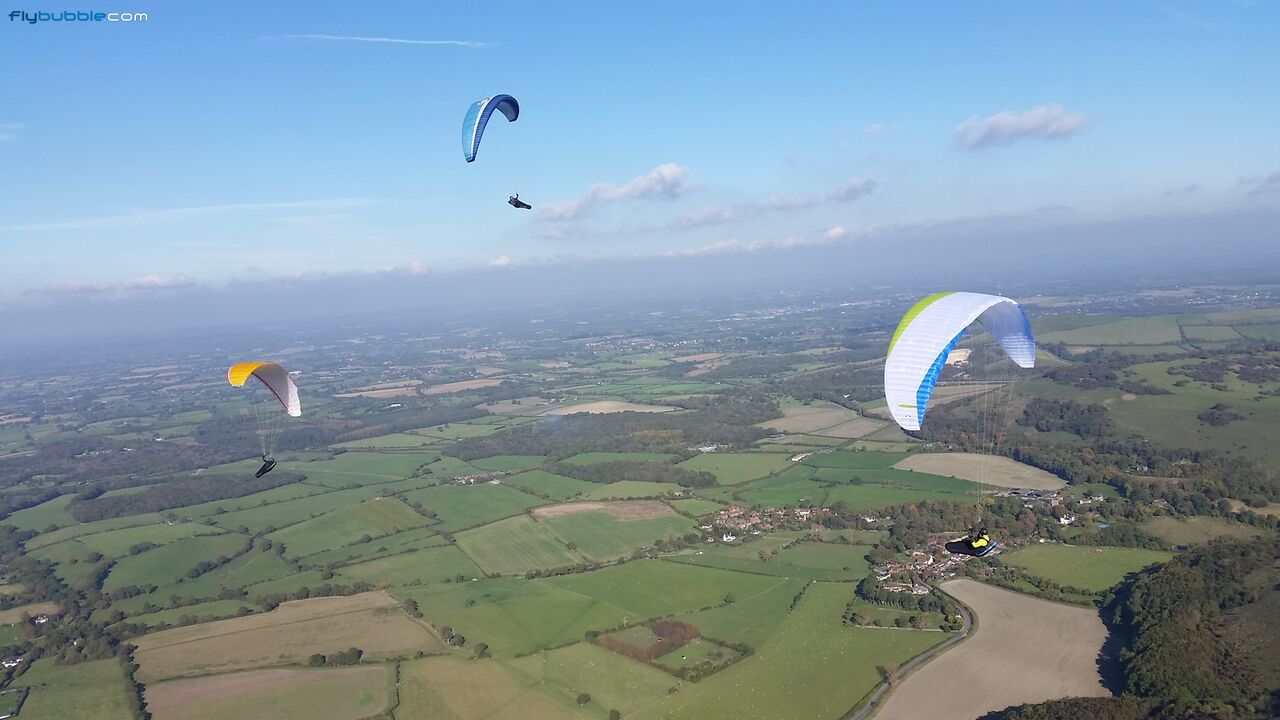
Image: Vincent Talleu
Climb rate
Several others launched into this cycle, some of whom were good pilots who climb very well. They were already well above the hill when I lobbed off ... a good opportunity to test the Omega X-Alps' sink rate and ability to climb in thermals. I'd read contradictory reports from different pilots on forums about its ability to climb, so was looking forward to finding out for myself.
Although it's impossible to fly in exactly the same air as another pilot, I tried to follow what other pilots were doing, so that I was seeing the difference between wings, rather than the difference between pilots. The Omega X-Alps seemed to climb better than the other wings. It steadily gained on those above me, and then climbed through them, repeatedly. It climbed so well and so nicely, that I couldn't help but grin!
From what I could tell, its sink rate is exceptional; nothing could touch it, whether soaring or thermaling! Admittedly, I was flying the Omega X-Alps 24 at approximately 93kg all-up, which is near the bottom of its weight range (90-110 kg) but my impression was that it climbs exceptionally well. I look forward to testing our smaller 22 when that arrives.
Later it started getting quite breezy. I had no problems penetrating against the wind. At trim I was at least as fast - if not faster - than all of the other paragliders I flew with. This higher trim speed makes it more challenging to fly amongst other, slower wings in crowded situations, but the Omega X-Alps can be slowed down a surprising amount for this level of wing, probably due to its new leading edge profile which tolerates higher angles of attack before stalling.
Performance
It's often misleading to do side by side glide comparisons with other wings, since every bit of air is different, but on every glide - up/down/crosswind, lifty/sinky/smooth/broken air - the Omega X-Alps seemed to be gliding best. There weren't any current comp wings out that day, so I couldn’t compare it to any of these. I suppose the performance won't be quite as good but I guess it won't be that far off, for wing that's significantly less demanding to fly!
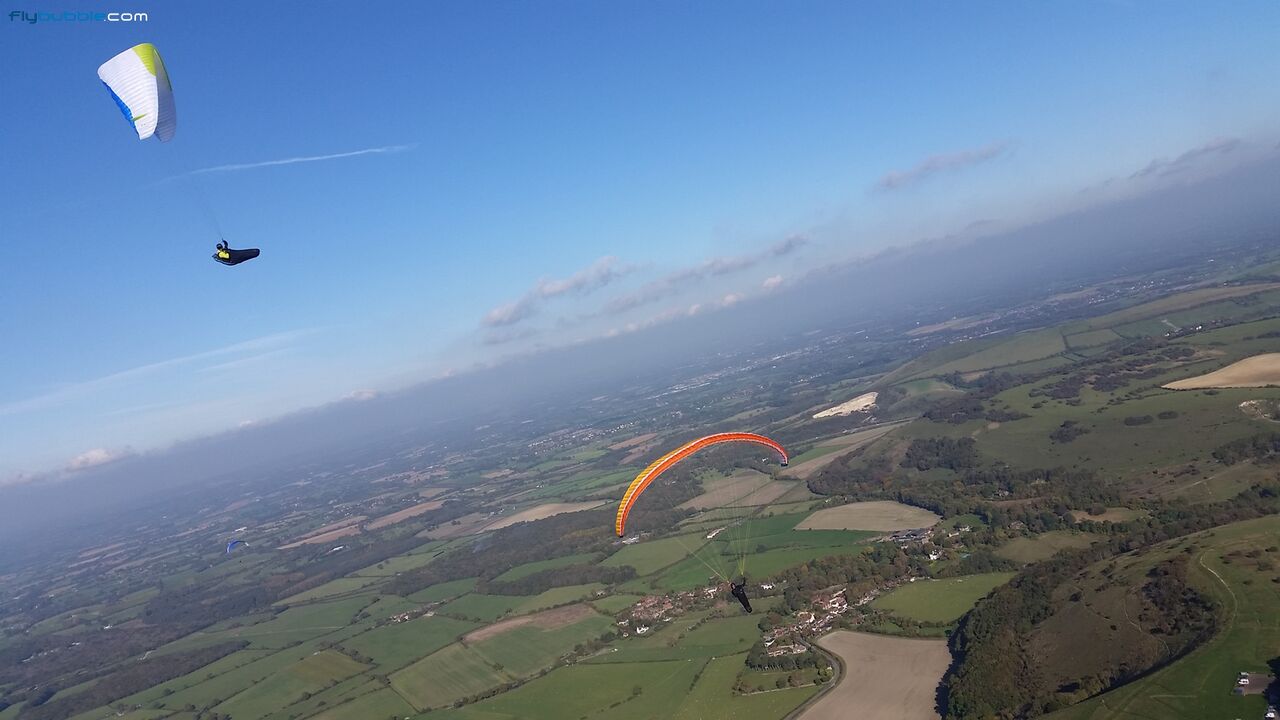
Image: Vincent Talleu
Speed
Although I generally use the speed system a lot (on most glides) when flying XC, I use mostly 1/3 to 1/2. My caution comes mainly from having seen pilots fall out of the sky or throw their washing as a result of gliding with 'pulleys grinding'. With the Omega X-Alps I soon felt confident to use 1/2 to 2/3 bar on upwind or sinky glides, and even used full bar for a couple of long upwind glides - which is unusual for me. The wing always felt very solid and reassuring accelerated, whilst still giving good feedback. From what I can recall, the Omega X-Alps feels more collapse resistant on bar than the Omega 8 did.
I'm not sure how much bar other pilots were using into wind, but the Omega X-Alps always pulled away, despite me flying it in the lower end of its weight range.
Handling
In the air the Omega X-Alps feels surprisingly solid and reassuring for a wing of this level. My first impressions are of a 'classic D' in terms of pilot demands - quite similar to the Omega 8, which surprised me as I was expecting something hotter in this regard. The handling feels very precise and refined; however my impression was that the Omega X-Alps responds a bit faster, turns a bit tighter, with a bit more bite and energy in the turn and a more dynamic feel, than the Omega 8. This is comparing the Omega X-Alps 24 flown near the bottom of its weight range to the Omega 8 27 flown 2/3 of the way up its weight range. I look forward to flying the 22 near the top of its weight range to see how that feels.
The flying conditions on this day were quite smooth, although I did manage to find some livelier air in a few places. Other pilots commented that the conditions had been smooth, with a few bumpier bits in places especially as the wind increased later.
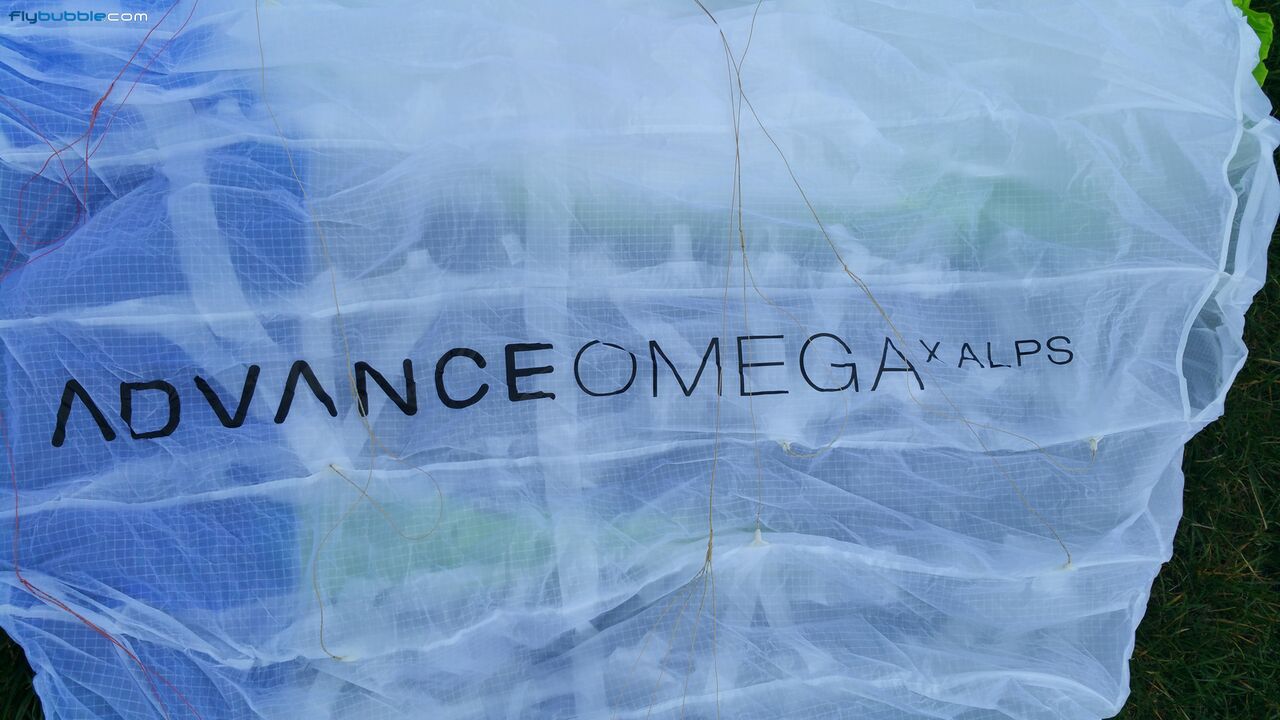
Conclusion
I wasn't expecting to like the Omega X-Alps quite as much as I do. My first impressions are that it's beautifully made, is a delight to launch, fly and land, climbs exceptionally, performs brilliantly, feels very solid and reassuring, and is superb on bar. No wonder then, that the team at Advance were so keen for us to try it!
Test conditions
I had 4 flights/2h38 on the Omega X-Alps 24 at Devils Dyke (Southern England) in mild conditions, and kited it for around 20 minutes.
More info about the Advance OMEGA XALPS >
